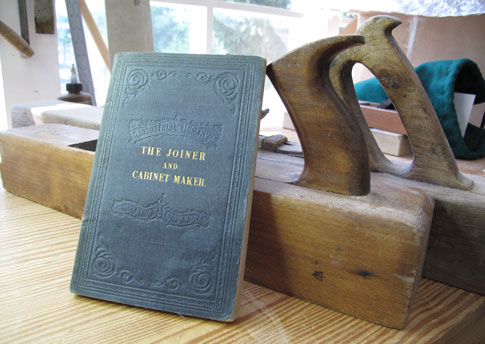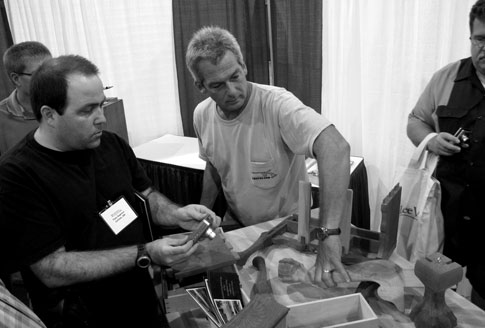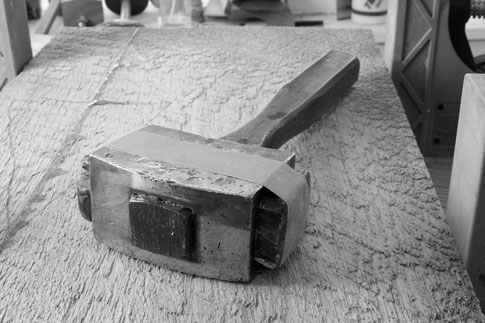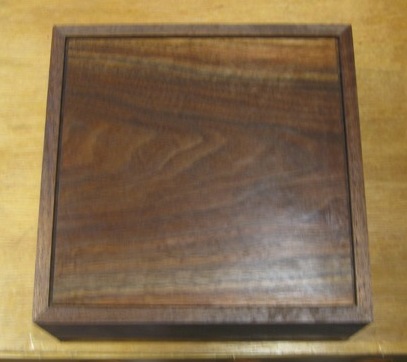
In 1839, an English publisher issued a small book on woodworking that has – until now – escaped detection by scholars, historians and woodworkers.
Titled “The Joiner and Cabinet Maker,” this short book was written by an anonymous tradesman and tells the fictional tale of Thomas, a lad of 13 or 14 who is apprenticed to a rural shop that builds everything from built-ins to more elaborate veneered casework. The book was written to guide young people who might be considering a life in the joinery or cabinetmaking trades, and every page is filled with surprises.
Unlike other woodworking books at the time, “The Joiner and Cabinet Maker” focuses on how apprentices can obtain the basic skills needed to work in a hand-tool shop. It begins with Thomas tending the fire to keep the hide glue warm, and it details how he learns stock preparation, many forms of joinery and casework construction. It ends with Thomas building a veneered mahogany chest of drawers that is French polished.
Thanks to this book, we can stop guessing at how some operations were performed by hand and read first-hand how joints were cut and casework was assembled in one rural England shop.
Even more delightful is that Thomas builds three projects during the course of his journey in the book, and there is enough detail in the text and illustrations to re-create these three projects just as they were built in 1839.
“The Joiner and Cabinet Maker” was virtually unknown to modern woodworkers until Joel Moskowitz of Tools for Woorking Wood obtained a copy and immediately saw its significance. He loaned a copy to me, and as soon as a I read the book I knew that we had to republish it.
Simply reprinting the book would have been the easy path, however. What Joel and I did was much more involved.
This month we are putting the final touches on a project that has taken untold hours of research, building, drafting and writing. This fall, Lost Art Press will republish the original text of “The Joiner and Cabinet Maker,” with additional chapters that will help you understand why the book is important, plus details that will make you a better hand-tool woodworker. In our expanded edition, you’ll find:
• A historical snapshot of early 19th-century England. Joel Moskowitz, a book collector and avid history buff, explains what England was like at the time this book was written, including the state of the labor force and woodworking technology. This dip into the historical record will expand your enjoyment of Thomas’s tale in “The Joiner and Cabinet Maker.”
• The complete text of “The Joiner and Cabinet Maker,” unabridged and unaltered. We present every word of the 1839 original (plus a chapter on so-called “modern tools” added in a later edition), with footnotes from Moskowitz that will help you understand the significance of the story.
• Chapters on the construction of the three projects from “The Joiner and Cabinet Maker.” I built all three projects – a Packing Box, a dovetailed Schoolbox and a Chest of Drawers – using hand tools (confession: I ripped the drawer stock on my table saw). My chapters in this new edition of “The Joiner and Cabinet Maker” show the operations in the book, explain details on construction and discuss the hand-tool methods that have arisen since this book was originally published.
• Complete construction drawings. I drafted all three projects in SketchUp to create detailed drawings and cutting lists for the modern woodworker. This will save you the hours we spent decoding the construction information offered in “The Joiner and Cabinet Maker.”
In the end, we got more than we bargained for in our effort to bring this book back to life. To be sure, I expected to become a better hand-tool woodworker by building these projects, but I didn’t expect this book to give me my own apprentice to train. You’ll have to read the book to find out more about that.
Like all Lost Art Press books, “The Joiner and Cabinet Maker” will be hardbound, printed on quality acid-free paper and made in the United States. As soon as we have a release date, we will publish it here. In the meantime, look for additional blog entries here about the “The Joiner and Cabinet Maker” and its significance to the hand-tool woodworker.
— Christopher Schwarz





















